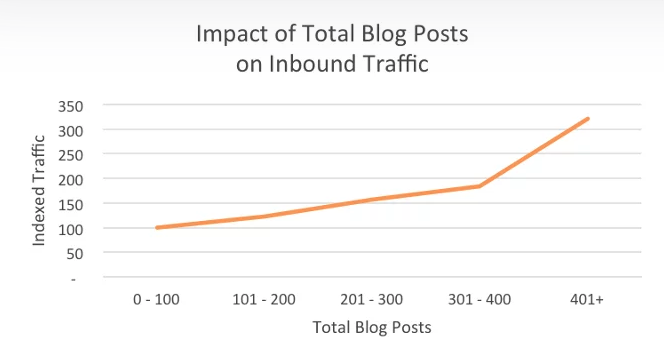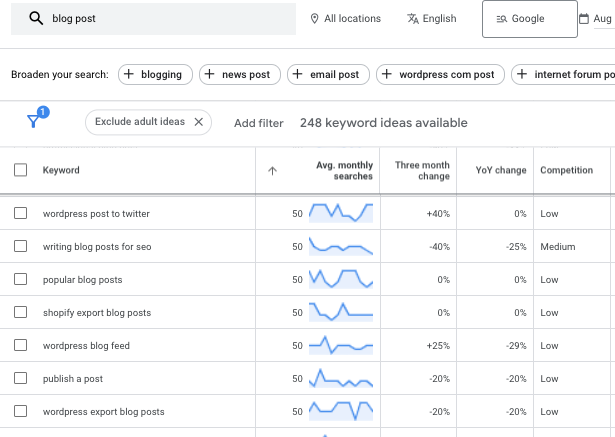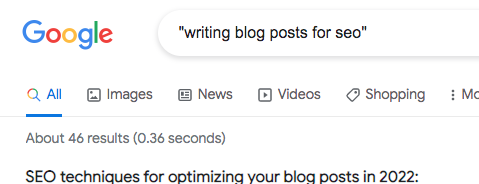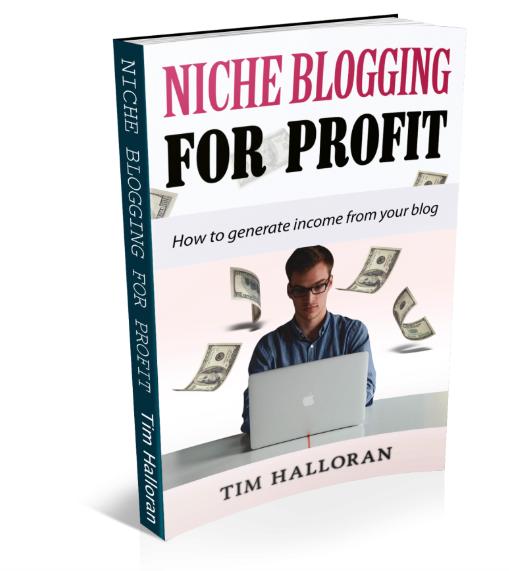Are you planning on writing blog posts for SEO? While blogging can take some time to get traction with, if you focus on SEO posts it can have a dramatic effect over time. What is an SEO post? SEO, as you probably know, means search engine optimisation. If you optimise your posts for the search engines, and choose your blog titles wisely, you can dramatically increase your chances of ranking your content in the search engine results pages – SERPS.
Not every blog post will rank on Google for your chosen keywords but this little strategy has worked for many bloggers. Over time, there is a cumulative effect of writing a lot of posts too. As your content library grows over time you should also pick up some SEO points just because you’ve built a lot of content too. Plus if your content is of high quality, you should also collect backlinks naturally over time, which has an impact on your ranking scores.

Writing Blog Posts For SEO
Before you start writing blog posts for SEO, you should plan what you’re going to write. Specifically you should research which keyword/s to title your blog posts. Start by typing your main “seed” keyword into Google’s keyword planner and look for the title ideas which offer the least competition on the SERPS. To find long tail keywords with low SEO difficulty can take a bit of effort. But once you understand how to do it, you’ll get better over time the more you practice.

To find this article title, I started with the keyword blog post, which led to the title of this article. You can do the same thing with any topic. Just use a keyword in a topic area you want to write about, type it into the keyword planner and have a look at the results. Typically you’ll see the most searched for terms first. These are usually two or three word keywords which have a huge search volume but they also have a lot of competition. These aren’t the terms you’re looking for (Star Wars reference!)!!
Writing Blog Posts For SEO: Find Long Tail Keywords
You can write articles for your main terms to help your SEO. But they will seldom rank on the SERPS because of the competition for those competitive keywords. To find titles which have more chance of ranking, you need to find low competition long tail keywords.
This can be done by clicking on the tab for Avg. monthly Searches at the top of the second column of results in the Keyword Planner. Click on it until you see the search volume drop to 10 monthly searches.
These are the keywords with the lowest monthly search volume which relate to your “seed” keyword. They also typically are longer tail keywords which offer less competition than the rest. Scroll through them to find a suitable keyword phrase which is a good fit for your blog.
Writing Blog Posts For SEO: Why Long Tail Keywords Work
Long tail keywords work for SEO because there’s usually less competition on the SERPS for those particular keywords. So you have a greater chance of ranking your content on Google. However, there’s also a lot less people searching for those terms and you’ll still share the search volume with other top ranking sites; even if your content gets to the very top of Google! Plus if there’s ads running for those keywords you’ll also be sharing the search volume with the top adverts showing on Google too!
That’s a lot of sharing which means with a search volume of only 10 a month, you’ll only get a proportion of that every month at best, if any! So the best is you rank at the top of Google for your chosen keyword. But if it only gets 10 hits a month, you’ll only get a fraction of that! Not much traffic for all your hard work. The more volume of traffic you see on the search tool, the more competitive the keyword generally is. So ideally choose a keyword which suits your needs. I like to pick keywords with at least 30 monthly views as a starting point. But remember your content may not rank at all, which means you also need to be an active promoter of your content too!
Checking Your Keyword On Google
Once you find a suitable keyword for your blog post title, you can check with a simply Google search to see how competitive your keyword phrase is. You can do a couple of searches on Google; one with an open search for your key phrase and the other with a phrase match (in quotes).


This can give you an idea of the competitiveness of your chosen keyword/s. The number you see under the search box on Google on a desk top computer/laptop gives you the number of competing pages/websites for that particular term. A high number means there’s more competition. The more you do of this, the more you’ll get to know what terms are competitive and which terms you have a chance of ranking your content for.
Search Intent & Competition
Once you find a suitable keyword, it’s time to start writing. Keep in mind too that some keyword phrases won’t be suitable for your blog. You don’t want to spend a huge amount of time attracting the wrong kinds of visitors. So it’s a good idea to check the intention behind a search phrase before you go ahead and write your article.
For example, if the keyword contains the word “free”, you may be inadvertently attracting an audience of freebie seekers to your blog. These people will be less likely to purchase something than someone seeking your product or service within the keyword search, for example.

Before you get to work on your blog you can also check on Google which posts are already ranking for your chosen keywords. Have a look at the length and quality of the top ranking post and out do it! Write a longer and more in-depth piece for the best possible outcome.
Writing Your Post
I use an SEO plugin which helps me write SEO friendly articles. This is a good idea if you’re attempting to rank your content on Google, and the other search engines. Yoast SEO is a free plugin which lets you populate your posts with the right amount of keywords and get them in the various fields for optimal SEO benefit.
Generally speaking the more you write the better your posts are. But if you’re just rambling after the first 500 words it’s probably better to stop! I like to aim for at least 1000 words with my blog posts. The longer the better! Write with SEO in mind but write like a human. If your articles aren’t enjoyable to read this will mean less people actually reading your content and that’s a major signal the the search engines to downvote it!
You’re Not Done Yet!
Once you’ve finished your blog post you’re still not done! You need to actively promote it if you want to get the most out of your content. I’ve never been great at promoting my writing so I found a few plugins which can help both in terms of actually optimising for SEO, getting more shares on social media and automatically sharing your blog posts throughout your social media presence. See best free blog plugins for WordPress.
One of my faves is Revive Old Posts which lets you automatically syndicate your blogs posts to your social media platforms as you publish them. You can also queue up older posts to by shared on a timer. This is great if you have a lot of content, or are intending on creating a lot of content.
See also autopost to social media from WordPress for a clever hack using the Revive plugin.